- Experiences of and pictures by a Kolkata boy
who went Pandal hopping during Durga Puja 2023.
I had lived for more than a quarter century in
Kolkata (erstwhile Calcutta), most of it during my formative years, but moved
out of the city in 1991. Thereafter I visited the city often, almost once a
year on average. However, I never visited it during the Durga Puja festival
since 1990. So, this festive season we spent six days in Kolkata - from
Panchami to Bijoya - with the specific objective of immersing ourselves into a
full Durga Puja experience after 33 years!
As most of you might know, Durga Puja, also
known as Sharadotsav, celebrates the
victory of goddess Durga over the shape-shifting demon Mahishasura. It begins
on the same day as Navaratri in the Northern and Western states, but the last
five days are of most significance in Bengal. The last day known as Bijoya coincides with Vijaya Dashami or Dussehra
celebrated in other parts of the country.
The primary goddess during the festival is Durga; however, the murtis include Ganesh, Lakshmi, Saraswati and Kartikeya. In Bengali tradition these deities are considered to be Durga’s children, and the festival is believed to celebrate the visit of Durga with her family to Mother earth, which is considered to be her “maika”.
The preparations for the festival start months ago with the dexterous artisans of Kumartuli conceptualizing the various styles in which the murtis of Durga and her children would be made. (The area gets its name because separate work-related districts were allotted to persons of a similar trade during the British time, so from Kumhar-tolly, or potters’ quarters). Simultaneously, local communities get to the drawing board to plan for their unique pandal structures (originally a tent), other celebration plans and budgets.
This year (2023) there were more than 50,000
pujas organized across the state, and with Rs 70k per puja the state government
had donated about Rs 350 crores (57% of the budget of Chandrayan 3). However,
this festival is estimated to generate economic activity of associated
industries including murti-making, setting up of pandals, lighting,
manufacturing, retail, food and beverage and advertisement, at more than Rs
60,000 crores ($7.5 billion). This level has been consistently increasing after
UNESCO, in 2021, included Durga Puja in its Representative List of Intangible
Cultural Heritage of Humanity.
It is mind blowing to think that so much time,
energy and money is spent around murtis, pandals, lighting, etc., all of which
is dismantled and dissolved just after about five days of festivities, without any attempt at preserving the deities or the
pandals! But then what bigger example would you have of the Indian philosophical
perspective of the ephemeral nature of the world, and of enjoying the process
of creation, sustenance, and destruction.
Pandal hopping in Kolkata
As we went hopping from pandal to pandal, we
experienced big leaps, not only in creativity and artwork from what we had seen
30 years ago, but also in social awareness and activism. All big pujas were
based on themes like reminiscing long cherished culture and values, social
responsibility (punorjojon),
celebrating joint families (baksho bodol),
celebrating rural art and culture, protecting forests (praan), celebrating power of words and expression (kothaboli), creating awareness around importance of women’s menstrual health, stopping exploitation of children and girls, recognizing the socio-economic impact the festival creates (durga sahai), recreating abol tabol,
impact of moksha and so many things in between!
We also attended a unique puja where the presiding deity was Ma Sharada (Ramkrishna Paramhansa’s wife) rather than Durga, and the first anjali was to her! In addition, we also saw many beautiful traditional pratimas and pandals.
While roaming the streets of Kolkata, we were
part of a sea of people cramming every inch of space at all hours of the day
and night! We tried all strategies to beat the crowd - visit in the night from
10 pm to 3 am, start early morning from 2 am to 8 am, travel during the day -
but there was always a crowd ahead of us! The police and administration did a
wonderful job of keeping both vehicular and pedestrian traffic moving
relatively smoothly. A new welcome feature was the enlisting of thousands of
police volunteers to support this exercise. Amidst all this we of course also
enjoyed the various street foods of Kolkata!

The one disappointing experience was that after
patiently struggling through lines when one finally reached the deity and the
inside of the pandal, there was constant whistle blowing and volunteers urging
people to move out. One could barely spend a couple of minutes appreciating the
beautiful pandal, deity and everything else.
Observation
In a nutshell, as Vir Sanghvi rightly describes: “You can take the craze of Diwali in Delhi, Christmas in London, Summer carnival in Rio, Valentines Day in Paris and then add it to the month long madness of Olympic games or the World Cup and cram all that in a span of 5 days and you still wouldn’t know what you are missing if you haven’t been to Kolkata during Durga Pujo!
I am sharing some pictures of pandals.
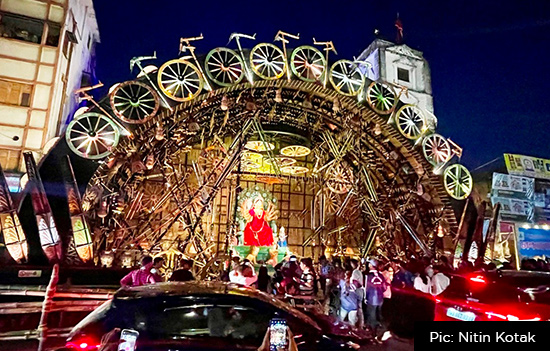
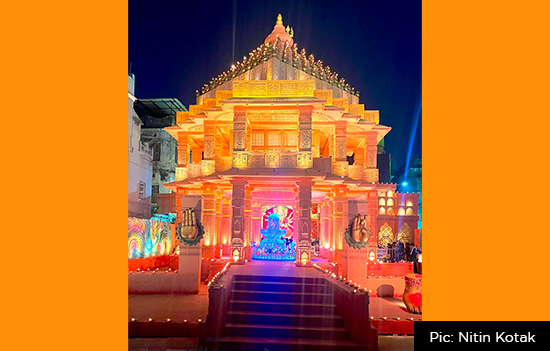
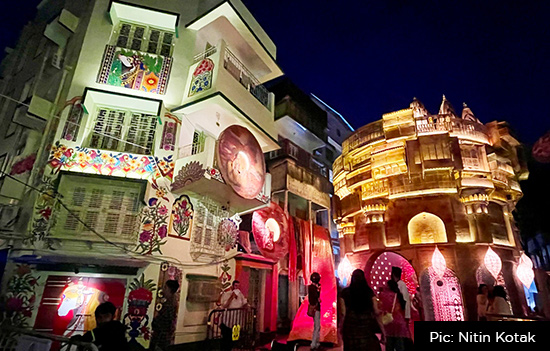
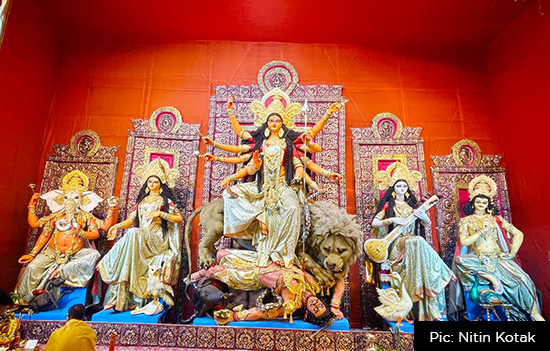
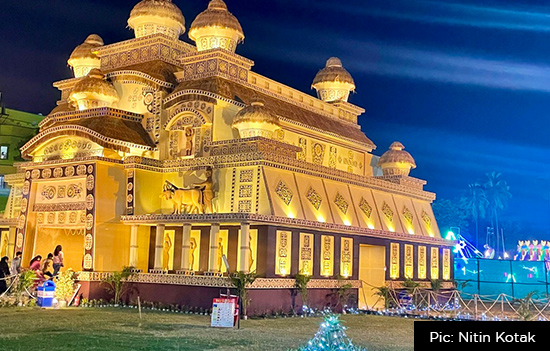
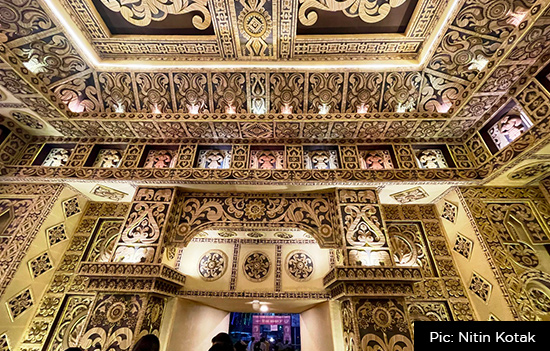
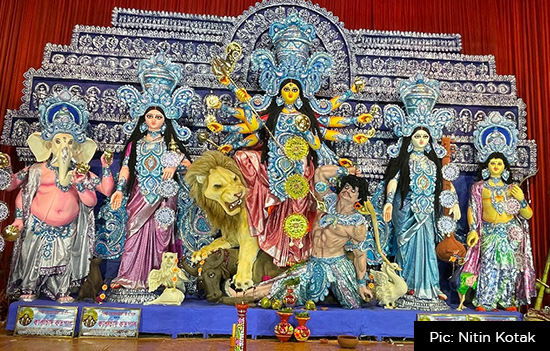
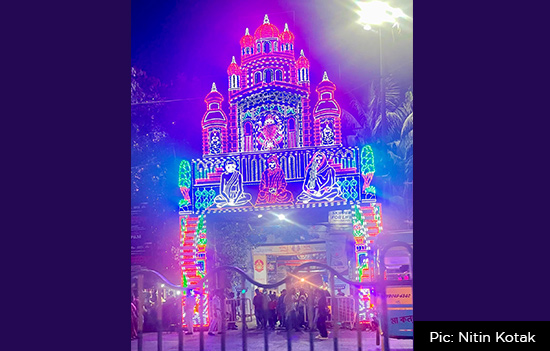 Centre is Swami Vivekananda, left is Ramkrishna Paramhansa and right is Ma Sharada.
Centre is Swami Vivekananda, left is Ramkrishna Paramhansa and right is Ma Sharada.
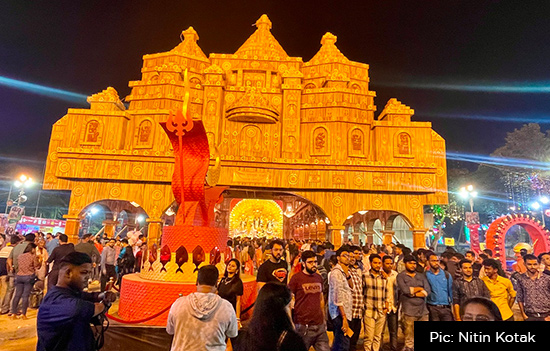
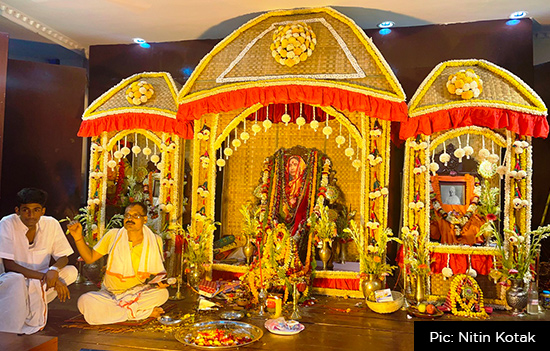 Deity is Ma Sharada (Ramkrishna Paramhansa’s wife).
Deity is Ma Sharada (Ramkrishna Paramhansa’s wife).
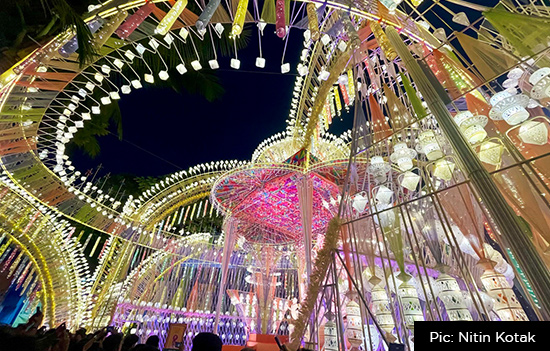
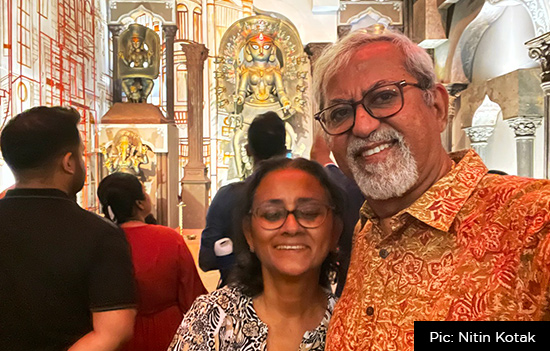 Author with wife.
Author with wife.
Also read
1. How
Durga Puja is celebrated in Kolkatta and its cultural significance
2. Durga
Puja Kolkatta album 2013
3. Worship
of God as mother in Indian tradition
4. Best
Places to eat in Kolkatta